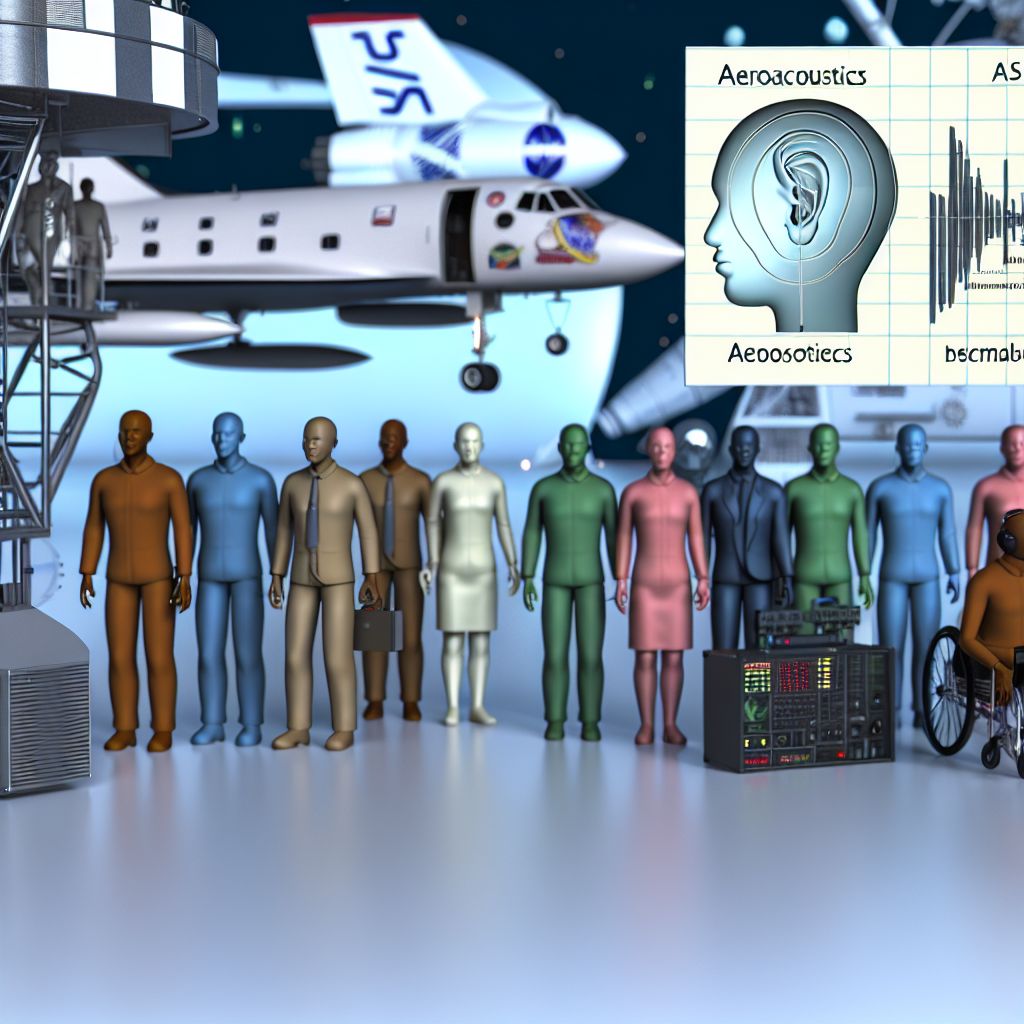Deutsch: Aeroakustik / Español: Aeroacústica / Português: Aeroacústica / Français: Aéroacoustique / Italiano: Aeroacustica
Aeroacoustics in the Space industry context refers to the study of noise generation via interaction between a Fluid medium (like air) and solid bodies, and its propagation within that medium. This field is particularly Critical in the Design and testing of Spacecraft, Launch Vehicles, and other Aerospace applications where noise can impact both structural integrity and human comfort.
Description

Aeroacoustics involves understanding how sound waves are generated and transmitted through the air and other gases as a result of aerodynamic forces, particularly during high-speed air flow over and around objects. In the space industry, this usually concerns the noise produced by rocket engines during launch and the atmospheric re-entry of spacecraft, both of which involve interactions at high velocities between the vehicle and the Atmosphere.
Application Areas
- Rocket Launches: The intense sound Pressure levels produced during rocket launches can cause physical damage to the launch structure and the spacecraft itself if not properly managed. Aeroacoustics Research helps in designing features to mitigate these effects.
- Re-entry Vehicles: As spacecraft re-enter the Earth's atmosphere, they Experience severe aerodynamic heating and generate shock waves that produce significant noise, which must be analyzed and controlled to protect the integrity of the spacecraft and the safety of its occupants.
- Jet Propulsion: Studying aeroacoustics is crucial for improving the design of jet engines in terms of reducing noise pollution and enhancing Performance efficiency.
Well-Known Examples
- Space Shuttle Program: NASA conducted extensive aeroacoustic testing with the Space Shuttle to understand and mitigate the acoustic impacts during launch and re-entry.
- Falcon Heavy: SpaceX’s Falcon Heavy launches involve careful consideration of aeroacoustic effects to design launch pads and rocket boosters that can withstand the intense sound and vibrations generated during Lift-off.
Treatment and Risks
Dealing with aeroacoustic challenges in the space industry involves addressing several issues:
- Structural Damage: High noise levels can lead to fatigue and failure of spacecraft components and structures.
- Human Exposure: Astronauts and Ground personnel are at risk of hearing loss or other harm due to exposure to extreme noise levels unless proper protective measures are taken.
- Environmental Impact: The intense noise generated during rocket launches can have adverse effects on the Environment and nearby wildlife, requiring careful planning and Mitigation strategies.
Summary
In the space industry, aeroacoustics is a critical field of study that focuses on the generation and control of noise caused by aerodynamic forces. It plays a vital role in ensuring the structural safety of spacecraft and rockets, as well as the comfort and protection of astronauts and the environment. Effective management of aeroacoustic effects is essential for the successful and sustainable Operation of space missions.
--
Related Articles to the term 'Aeroacoustics' | |
| 'Sound' | ■■■■■■■■■ |
| Sound in the Space industry refers to the study and management of acoustic vibrations within spacecraft . . . Read More | |
| 'Aerodynamics' | ■■■■■■■ |
| Aerodynamics, from Ancient Greek: aero (air), is the study of the motion of air, particularly when affected . . . Read More | |
| 'Vibroacoustic' | ■■■■■■■ |
| Vibroacoustic refers to the study of the interaction between vibrations and Sound in a system. In the . . . Read More | |
| 'Aerodynamics' at environment-database.eu | ■■■■■■■ |
| Aerodynamics in the environmental context refers to the study of how air moves around objects, including . . . Read More | |
| 'Acoustic noise reduction' | ■■■■■■■ |
| Acoustic noise reduction refers to the methods and technologies used to minimize unwanted sound, particularly . . . Read More | |
| 'Physicist' | ■■■■■■ |
| Physicist: A physicist is a scientist who specializes in the field of physics, which encompasses the . . . Read More | |
| 'Aerodynamic' | ■■■■■■ |
| Aerodynamics is the study of the motion of air, particularly when affected by a solid object, such as . . . Read More | |
| 'Seismology' | ■■■■■■ |
| Seismology is the study of earthquakes and other seismic activity. In the aerospace context, Seismology . . . Read More | |
| 'Spectroscopy' | ■■■■■■ |
| Spectroscopy is the field of study that measures and interprets the electromagnetic spectra that result . . . Read More | |
| 'Wind dynamics' at environment-database.eu | ■■■■■■ |
| Wind dynamics in the environmental context refers to the study of how wind patterns and processes interact . . . Read More | |
